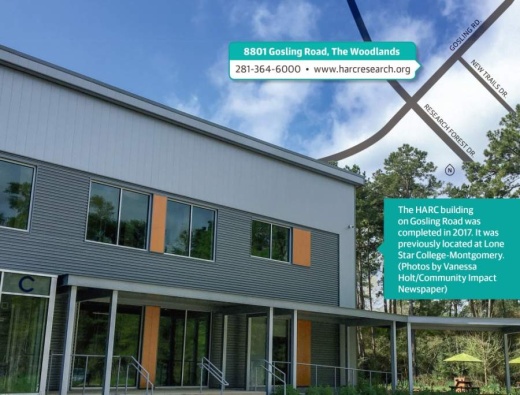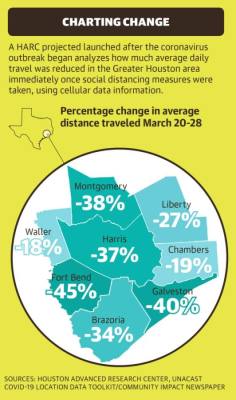Created in 1982 by The Woodlands founder George P. Mitchell, HARC began as a nonprofit technology incubator and research facility. This focus shifted in 2001 when it began to instead focus its research on sustainable development in the fields of air quality, clean energy and water.
“The shift [was] towards, ‘What does the future look like?’” Communications and Market Specialist Kacey Wilkins said.
HARC has been located in its building on Gosling Road since 2017, she said.
Since stay-at-home orders went into effect for Greater Houston-area counties in March, however, researchers have also begun to study how much those orders affected travel as well as how that reduced travel is affecting certain environmental factors.
“With this ongoing study, the region will have a better understanding of how effective the messaging and directives were in influencing mobility and whether this behavior modification ultimately impacted a flattening of the curve or helped to lessen COVID-19’s spread,” HARC Program Director Gavin Dillingham said.
After Montgomery County issued a stay-at-home order March 27, for example, the average distance traveled dropped by more than 50% from March 20-28, according to data gathered from the Unacast COVID-19 Location Data Toolkit.
The analysis is conducted by using a baseline to compare the average distance traveled on a daily basis before and after social distancing measures took effect.
Information derived from the data analysis by HARC can be useful in planning for potential future health crises or natural disasters, HARC President and CEO Lisa Gonzalez said.
“In addition to slowing the rate of infection, reducing the burden on medical facilities and saving lives, stay-at-home orders also have far-reaching effects on infrastructure systems, communities and the environment,” Gonzalez said. “The research HARC develops is an opportunity for organizations to better understand a wide range of COVID-19 implications.”
HARC is primarily funded through foundations, federal grants and corporate sponsorships as well as individual giving. The dozen or so researchers employed by HARC secure funding for individual projects, she said.•







